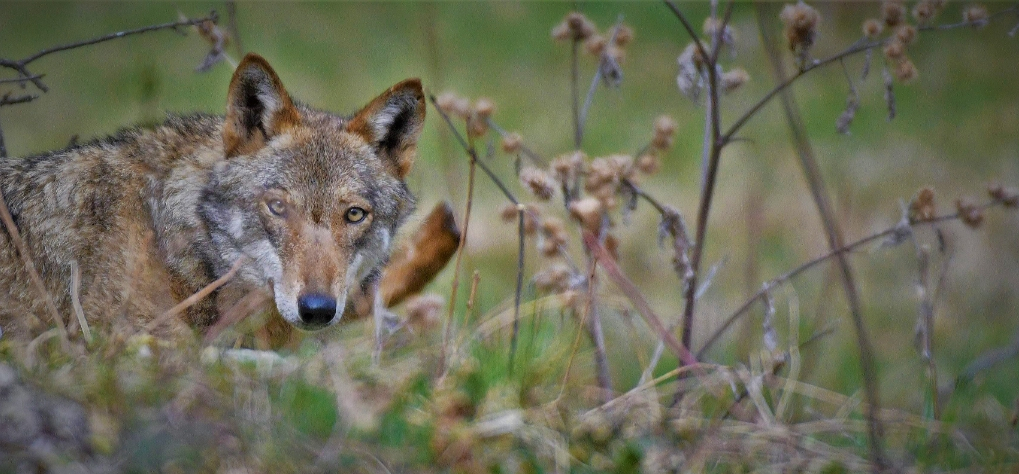There are several studies about this topic, as reported in the article published on the website of Lifegate...
Its translation in English is reported below.
A new study confirms that the control of wild predators by non-violent methods is more effective than their killing.
The biological and ecosystemic importance of great predators has now been amply demonstrated. The species at the top of the food chain play a fundamental role that has repercussions on all subsequent levels, from herbivores to plants. Yet still today in the whole world wolves, pumas, lynxes, coyotes and bears are killed, to protect livestock and in the name of ancient fears and because, after all, it is easier to pull a trigger than trying to learn to coexist.
The wolf plays a fundamental role in the ecosystem it lives in, by controlling the size of herbivore populations and eliminating the carcasses of animals, died from natural causes.
Killing is not the most effective method, on the contrary
ineffectiveness of killing has been proved again by a study published in the magazine Plos One and carried out in Michigan, in the United States, between 1998 and 2014. Researchers analyzed two methods of intervention adopted by the government following episodes of predation committed by wolves against domestic animals. The first one consisted in the selective killing of wolves sighted near the place where the predation occurred, while the second one used non-lethal methods. The authors of the study believe that killing has not been effective in reducing the risk of new attacks in the surrounding area.
The false belief around the effectiveness of lethal methods
Researchers also tried to explain the widespread and unsubstantiated idea that killing is effective to reduce attacks on livestock. There may actually be benefits, they explained, but only for a small minority of farmers. The surrounding breeders could instead suffer an increase of the attacks, but instead of thinking that the problem could be linked to the previous slaughter, they would in turn demand the culling of the wolves in the area.
The false belief around the effectiveness of lethal methods
Researchers also tried to explain the widespread and unsubstantiated idea that killing is effective to reduce attacks on livestock. There may actually be benefits, they explained, but only for a small minority of farmers. The surrounding breeders could instead suffer an increase of the attacks, but instead of thinking that the problem could be linked to the previous slaughter, they would in turn demand the culling of the wolves in the area.
The most effective deterrents are the least violent ones
Similar results have been documented in a study published in 2016 in the magazine Frontiers in Ecology and the Environment. Researchers, a team of scientists from the United States, Slovenia and South Africa, analyzed data on predation rates on farm animals from both the United States and Europe, demonstrating that the most effective deterrents do not include culling of the predator. In most of the analyzed cases, the use of lethal deterrents did not reduce predation, on the contrary, in some cases greater losses of livestock have been recorded in the period following the culling of predators. Both studies have concluded that the methods which resulted to be most effective were non-lethal ones, such as the use of sheepdogs and “flandry”, which is a visual deterrent consisting of a rope with attached clearly visible red strips.
After being hunted until it was almost extinct, the puma is still subject to retaliation by breeders in the United States
The numbers of the carnage
In the United States predators, whose numbers are already extremely small compared to a few decades ago, are culled without interruption. In 2014 alone, according to data reported by the Wildlife Service program of the Department of Agriculture, 2.7 million animals were killed to control predatory populations, including 580 black bears, 796 lynxes, 305 pumas, 61,702 coyotes, 1,186 red foxes, and 322 wolves, for a cost amounting to approximately 127 million dollars.
Lethal and non-lethal techniques
Cattle owners usually resort to various methods, both lethal and otherwise, to protect their animals from wild predators. Deadly methods include hunting, slaughtering of whole litters, poisoning and trapping. The methods that do not envisage killing the animal include the use of shepherd dogs, baits to keep predators away and sterilization. According to the study Predator control should not be a shot in the dark, such methods are used without first taking experimental data on their effectiveness into consideration.
Lack of knowledge
The explanation, according to the authors of the research, probably lies in the fact that the methods of controlling predators to prevent loss of livestock have very rarely been the subject of rigorous scientific studies. To counter attacks by canines, felines and bears in North America and Europe it is therefore necessary to evaluate data and studies conducted previously. “Predators are a public resource – stated Adrian Treves of the Nelson Institute for Environmental Studies at the University of Wisconsin – their destruction cannot be undertaken lightly, without evidence of its effectiveness, nor for the sole benefit of a small minority of people, like breeders”.
Killing a protected species favours poaching
In the United States the controlled culling of some specimens of threatened big carnivores to counter poaching has failed, as revealed by a study by Adrian Treves of the University of Wisconsin and Guillaume Chapron of the Swedish University of Agricultural Sciences. “Allowing wolf hunting increases the chances of poaching, rather than decreasing them,” the study concluded.
Shepherd dogs are the best deterrent against the attack of wild predators on cattle
Find a method
Researchers argue that in order to effectively protect livestock non-violent methods of deterrence should be improved and regulated, establishing a sort of standard to follow. For this reason they suggest continuous training for wildlife managers, in order to keep them updated with the latest scientific discoveries and to promptly suspend those predator control programs that revealed to be ineffective. “Effective non-lethal methods preserve the public good, protecting at the same time private livestock,” Treves concluded. We hope that greater scientific rigor will also be used in Italy, where the wolf is now considered again as a threat and where there is therefore the risk of applying an exception to the European law, authorizing its hunting.







